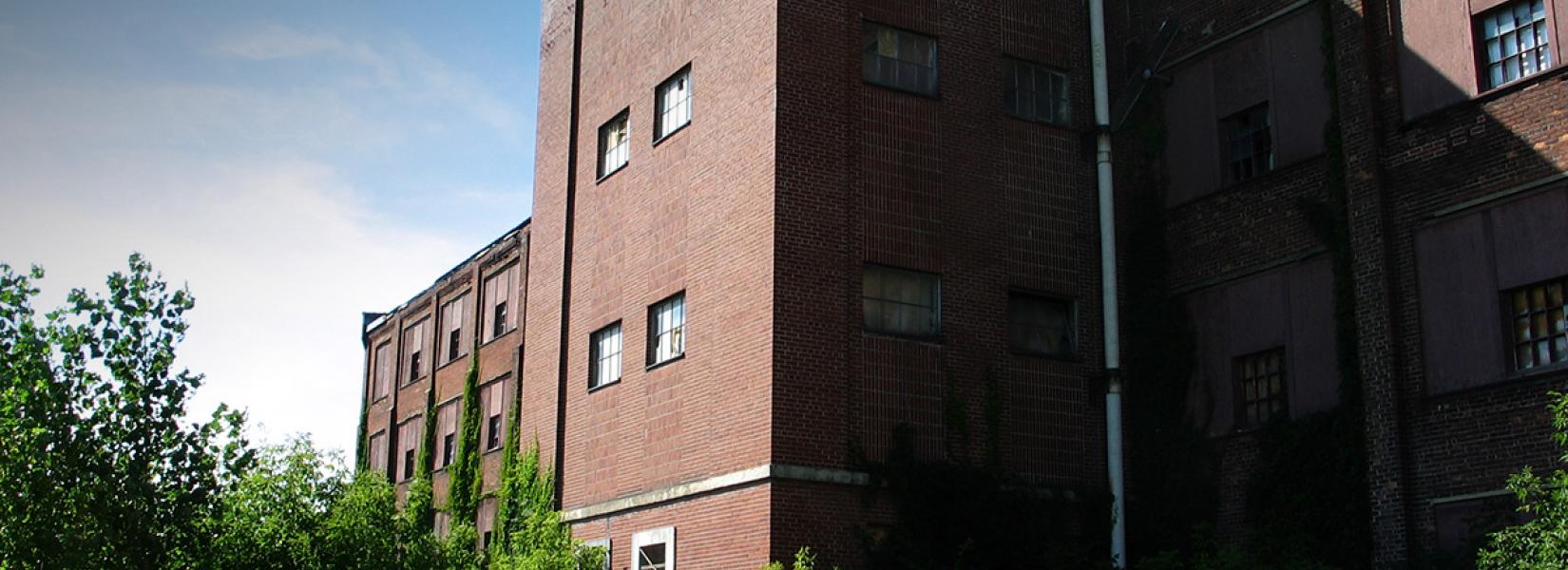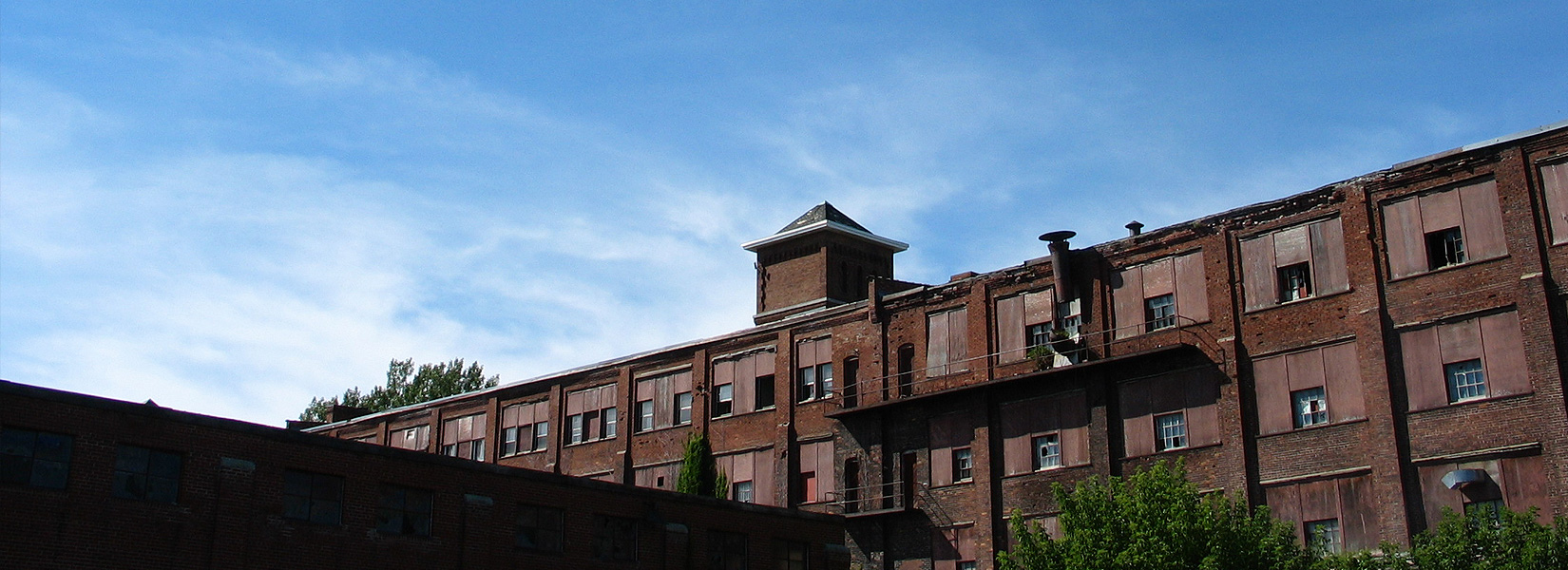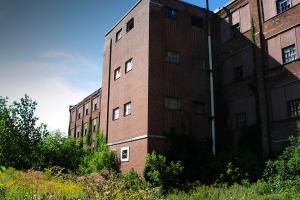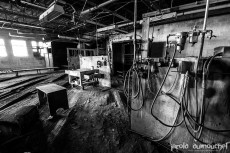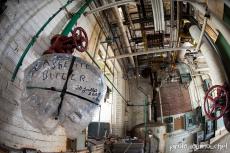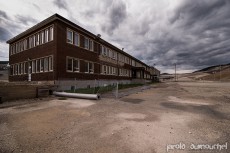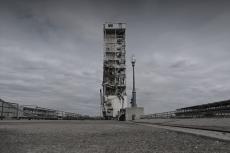Cynically, we could almost say that the factory is as large as the village in which it is located. You should know that we are far away in the countryside, it that kind of place where everybody know each other by his first name. At first glance,...
Singer's abandoned plant
100 years of history destroyed in few weeks
Destroyed by mechanical shovels in 2011, it is a true slice of history of the city of Saint-Jean-sur-Richelieu who was destroyed that day in February. The adventure of the Singer factory has lasted over 100 years and has gave work to thousand of people from the district of the Notre-Dame Auxiliatrice parish (Saint-Jean area, adjacent to the plant).
It was in 1904 that the history of the Singer begins at Saint-Jean-sur-Richelieu, 50 years after the construction of the first factory of the company in New York (1851). Inaugurated in 1906, the St-Jean's plant will be 25 times larger than the first plant opened in the country in 1883, in Montreal.
Why Saint-Jean-sur-Richelieu? The choice of the city comes from a variety of tax advantages granted to Singer like exemptions from municipal and school taxes for 20 years, tax credits, construction of a railway for the exclusive use of the Singer, $ 20,000 of funding, donation of the land and those around the plant for residential construction for employees, etc.. In total, $ 500,000 in various grants that are offered to company. An astronomical sum for the time.
Construction requires more than 800 employees and will last two years.
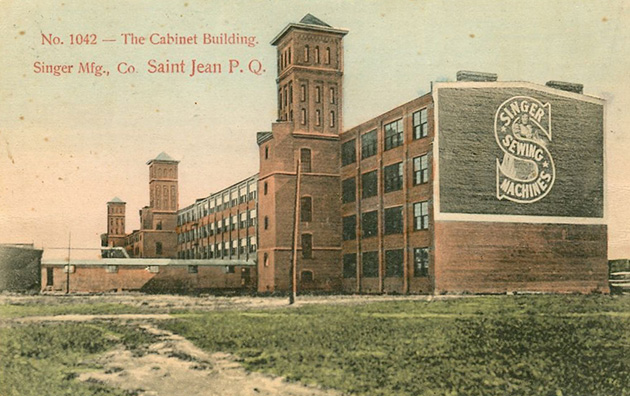
Singer in 1911
Credit: Fernand Hébert - Virtual Museum of Canada
During the Second World War, the factory will be adapted in order to build war materials. Once the war ended, the plant will restart to build sewing machines. The directors of the company take the opportunity to upgrade facilities by building, among others, a new foundry, new warehouses and two garages. In total, six million will be invested. While its area was 580,000 square feet, it will grow to over 900,000 square feet once the expansion will be completed in 1952. These renovations will mark the beginning of the golden age of the plant. Sewing machines manufactured in Saint-Jean-sur-Richelieu will be shipped in more than 48 countries.
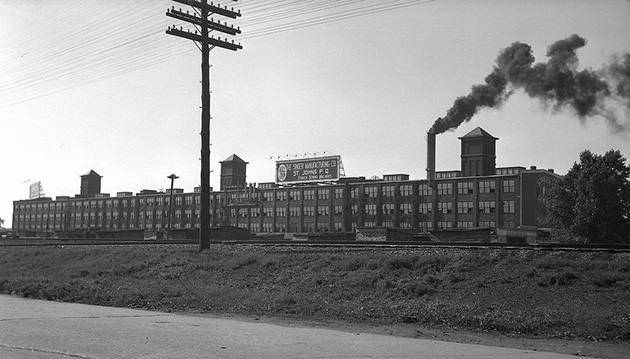
L'usine de la Singer en 1945
Credit: Bibliothèque et Archives nationales du Québec - Benoit Brouillette - Virtual Museum of Canada
Ironically, this period also marked the beginning of the end. While many sections are modernized, we begin to close some others departments in order to transfer part of the production to other countries, including Brazil and Scotland.
Today, there are on the former site of the Singer factory, condominium towers and shops. Factory's look and feel with its red brick panels has inspired the new construction. At least, the spirit of the old factory has been preserved.
Related content
For several times I passed by this little factory located in an old industrial area in the Eastern Townships, but I never been inside. Each time, I wondered if it was still active or abandoned. I must say that several tiles were broken, but I was...
It takes a lot of motivation to get to this old mine and foundry abandoned since 2002. For it must be admitted that we are rather far from everything in this distant municipality of 650 inhabitants. Moreover, if this village exists, it is above...
So you might think the old Conveyor dock's tower straight out of the fourteenth century, but you're wrong. The pier on which it is located was built in 1956-1957 and was one of the last marine works at the port of Montreal before it does change...

